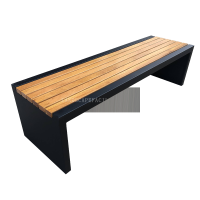Welcome to the website for landscape facilities products and knowledge.
What are the most common manufacturing defects in landscape chairs, and how are they detected?
Landscape chairs are a popular choice for outdoor spaces, but like any manufactured product, they can suffer from defects during production. The most common manufacturing flaws include uneven welding, weak joints, surface cracks, poor paint adhesion, and structural instability.
Uneven welding often occurs in metal frames, leading to weak spots that compromise durability. Weak joints, particularly in wooden or plastic chairs, can cause wobbling or breakage over time. Surface cracks may appear due to improper material curing or exposure to stress during molding. Poor paint adhesion results in peeling or fading, while structural instability makes chairs unsafe for use.
To detect these defects, manufacturers employ rigorous quality control measures. Visual inspections identify surface flaws like cracks or paint issues. Stress tests evaluate joint strength and structural integrity. X-ray or ultrasonic testing can reveal hidden welding defects. Additionally, sample testing under real-world conditions ensures long-term reliability.
By addressing these common defects early, manufacturers can deliver high-quality landscape chairs that withstand outdoor elements and provide lasting comfort.
Related search:

Recommendation
Modern Stainless Steel Begonia Wood Park Chair Outdoor Courtyard Leisure Sun Protection Bench Long Seat